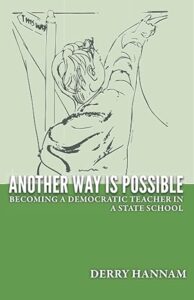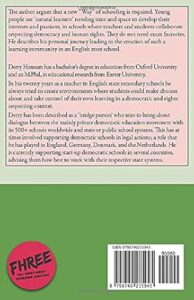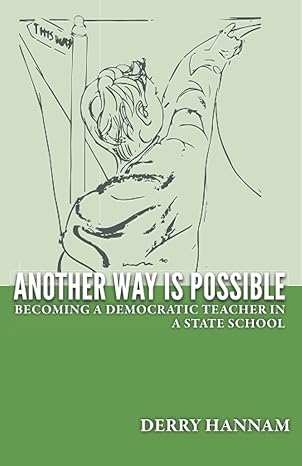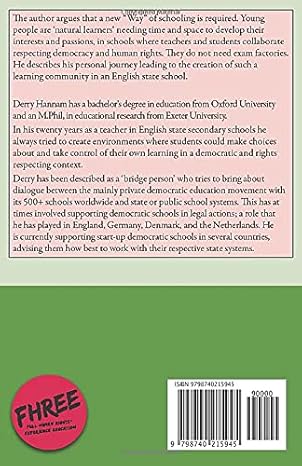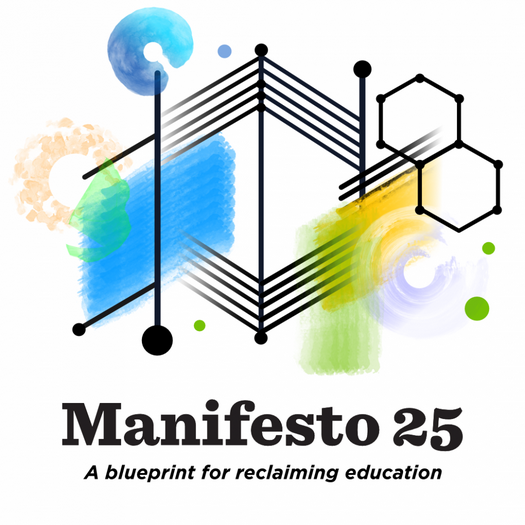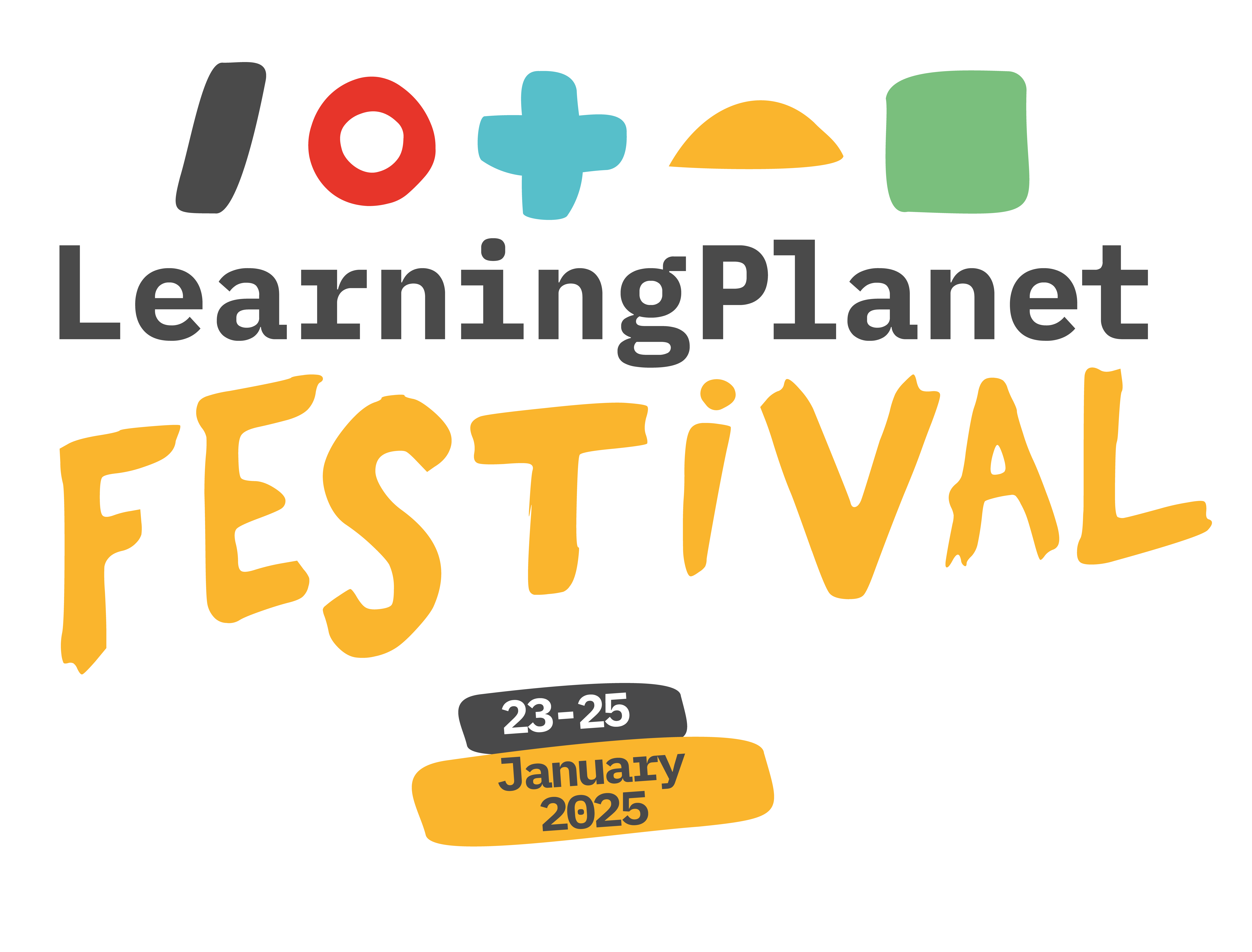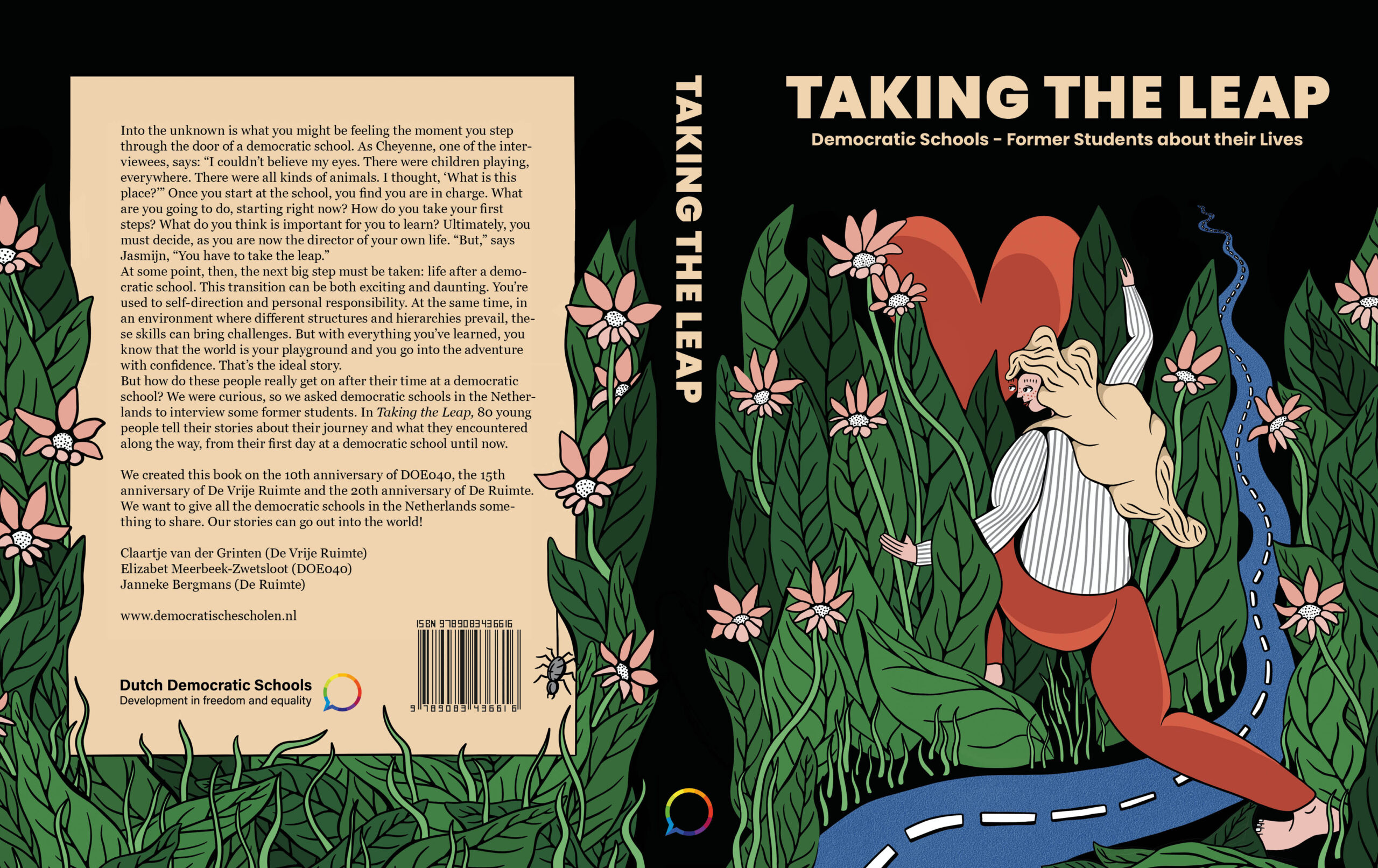EUDEC is proud to present an article by Derry Hannam , offering a truly inspiring insight grounded in real events and personal experiences. This is a must-read for everyone—from parents to educators—highlighting key perspectives on the current state of education. Derry Hannam has also published a book “Another Way Is Possible – Becoming A Democratic Teacher In A State School: Self-Directed Learning in a Context Of Democracy, Human Rights and Community” sharing his experiences and reflections, offering valuable suggestions on how to improve education and emphasizing why such improvements are crucial.
20% Time for Schools – A Modest Proposal from Derry Hannam
“I’m Derry Hannam. I spent 20 years in three state secondary schools creating self-directed learning spaces in democratic and rights respecting contexts. My book tells the story of the first of these – 2 years in a Buckinghamshire secondary modern school where kids were labelled failures at age 11. I am still in touch with some of them as they come up to retirement. They all remember those 2 years. Two have written a chapter in the book.
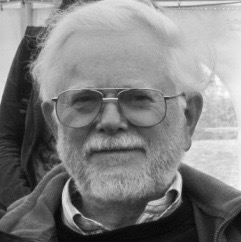
The crucial commodity that young people need in order to find and deepen their interests and identity, and to learn how to live with others is time. Time to think, to wonder, to question, to create, to make and learn with friends, to find out who they are – and a space to do it in.
Yet this is the one thing that prior to Covid most state secondary, and increasingly, primary schools, deprived them of. Lunch hours and playtimes were shortened or cut. The encroachment into their free time was not just during the school day but also at home, in the evenings and at week-ends, with relentless homework and test/examination revision.
Even during Covid and school closure/lock-down many schools aimed to teach on-line on a full school day basis. The tasks set were often conventional school-work and teacher-talk, from the screen instead of from the whiteboard, followed by a conventional test. Some parents were expecting and requiring this, but a growing number were not. Young people missed their friends during the pandemic lockdown – but many did not miss lessons where they had no choice, no control or agency and no consent in their learning. Many parents struggled to present this curriculum to their children at home.
Research into Canadian parents’ attitudes to school curriculum since the Covid lockdowns showed that 73% thought that much more attention should be given to the interests of the students when the schools reopened. Danish parents found that “Since the exams and mandatory learning goals are abandoned for now, teachers report feeling more playful with students. They are working with co-creation and involving students in making decisions more than before. There is more quality time spent between teachers and students, resulting in better relationships and increased student well-being.”
The emphasis switched from teaching to learning, from prescribed content to inquiry, and, freed from the pressure of examination preparation, a change in the quality of student-teacher relations to include more student participation and creativity. What an opportunity this provided to do things differently when schools re-opened for all students! But it hasn’t happened in England has it? We are too busy ‘catching up.’
Self-determination theory demonstrates an association between mental health and well-being and the student agency and autonomy provided by participation in decisions about their own learning. Time and space for self-directed and self-exploring learning around the interests, concerns, questions, enthusiasms, passions, talents and purposes of the young people themselves. Jerome Bruner spoke of the 3 ‘c’s of childhood – that children are naturally curious, collaborative, and need to feel competent – adding with the late Ken Robinson that they are naturally creative.
It is perfectly possible to have a school system where vision and implementation are aligned. Where high attainment does not create the pressure, anxiety, loss of well-being and threat to mental health that we are witnessing in England with the national tragedy of the planned failure of a third of our young people at GCSE after 11 years of compulsory schooling and being told the purpose of life is high grades. Finland, for example, under the banner of “Less Is More” has a shorter school day than most with minimal homework – a legal maximum of 30 minutes per night in total and none at week-ends which are held to belong to the students – and no high-stakes national tests until the final year of high school. Despite this apparently more relaxed approach to schooling academic performance is higher on average in Finland than in most European and North American school systems.
Some English secondary schools have activities weeks at the end of the summer term when examinations are finished. A wide variety of ‘off-curriculum’ activities occur involving students, parents and community groups often offered to mixed age-groups. The variety and enthusiasm generated can be impressive. School and community ‘turn on’ to each other. Relationships can be transformed by this exercise in democratic citizenship. Students previously disengaged from school can change their attitudes both to school and to themselves as learners as entirely new opportunities for choice and engagement emerge. In the rural Derbyshire school where I was community deputy head a community newspaper co-edited by adults and students emerged which 30 years later has just published its 200th edition. A community orchestra began with some 80 players aged 8 to 80.
There are rural schools where many students cannot take part in extra-curricular activities because of long bus journeys home where programmes of electives move ‘extra-curricular’ into the regular school timetable for one afternoon per week. These are negotiated between students and all adult staff around the interests, questions, concerns, purposes, passions and enthusiasms of both. In one school where I was an inspector close to a famous motor racing circuit and with the assistance of some parents, a mixed age and gender group actually built a working racing car as an elective project. Because conventional teaching time was reduced it was possible for the electives programme to have a budget and if no staff member could be found an ‘expert’ could be hired. One parent told me that their children would ‘get off their death beds to get to school on electives day.’ This school had very few exclusions, high levels of attendance especially on electives afternoon and better than expected GCSE results.
The International Baccalaureate Middle Years (11-16) programme personal project; the Extended Project Qualification (EPQ) at A level; the personal project 20% component of Rosina Dorelli’s Biophilic Curriculum; the EDEXEL project qualifications all offer these self-directed opportunities for those students who are fortunate enough to attend schools where they are available. No-one questions their power of engagement or that the time allocated to them undermines standards in the rest of the curriculum. As Kate Longworth of Gaia Learning which creates personalised curriculum for neuro-diverse learners, puts it ‘the simple idea is that when learners engage with what they are passionate about motivation and focus increase, leading to more success’ and of course enhanced well being.
In Germany there are now more than 300 state secondary schools in the Schule im Aufbruch programme led by Berlin head teacher Margret Rasfeld where Fridays/Fritags are indeed Freitags giving students the opportunity to devise studies of their choice around the UN SDGs (sustainable development goals) for one day per week (20% of curriculum time).
The 20% proposal
So – my modest proposal is that all English state-funded schools, primary and secondary, should allocate 20% of curriculum time for negotiation around the interests, concerns, enthusiasms, purposes, passions, talents and questions of the students. Time for individual or collaborative self-directed learning.
In schools where the learning has been very largely adult directed self-directed 20% time would need to be introduced with careful preparation to ensure that vision and implementation are aligned. Students could be organised into small tutorial groups for support and monitoring as practised at the self-managed learning college in Brighton, or crew as practised at the XP schools in Doncaster. Teachers with research experience could be joined by academics from local universities to provide support in case of ‘floundering paralysis’ or panic in those who might suffer anxiety and uncertainty at the new responsibility and opportunity. So long as this support does not threaten student ownership of their projects.
Flourishing, thriving and agency would be the key drivers. The introduction of 20% time would fit nicely into schools that were developing digital learner profiles along with some cross-curricular teacher led project-based learning perhaps using the Universal Framework of Essential Skills. Of course some students might choose to use their 20% time to extend and deepen their learning in a mainstream subject though any sign of parental competitive pressure would need to be carefully monitored and resisted. The staff could also use this time to pursue their own research questions and interests becoming exemplars of lifelong learning.
Sometimes the students themselves might be facilitators for other students. A teacher recently wrote in my union magazine about how much more her students knew about climate change than she did! And she was a science teacher!
The negotiation process itself would be educational. The motivation and morale of adults and students will rise. The new engagement which will result will more than compensate for any loss of learning from reduction in formal subject teaching time. In fact, standards will rise. Attendance and Results will improve. Exclusions will decline. Students will learn how to take responsibility for at least part of their learning and learn how to manage at least part of their own time – both crucial if they are to deal with the changes, opportunities and uncertainties that the Fourth Industrial Revolution (4IR), artificial intelligence (AI), and Climate Change are already presenting us with.
Students will learn to discover their own genius and create their own identities rather than just being defined by test scores. As paid employment declines in the future with AI and 4IR and Universal Basic Income (UBI) becomes the norm young people will learn how to be unique, creative, socially responsible individuals who do not rely on full time paid work for their identity. They will have learned the entrepreneurial skills necessary to launch their own economic or social enterprises. 20% time could be an incubator for student initiated small businesses supported by mentors from the local community – this would help to staff the small 20% time tutor groups.
Schools could create a ‘20% Committee’ of staff and students to plan how the 20% programme would be organised. This would require students to participate in serious school decision making avoiding the tokenism of too many school councils. A 20% or ‘passion’ department could be created led by a teacher of deputy head status and staffed by teachers from all subjects who chose to work in this way. This would create a team of experienced self-directed learning facilitators. It could have its own part of the school buildings – the 20% wing or school within a school where presentations of student projects and initiatives could be held. An entirely new approach to assessment would be required based on processes as much as finished projects – failure would be something to be learned from and not to be feared. The Edge Foundation and Rethinking Assessment have much to offer here. The 20% department could develop digital pupil profiling which could gradually be adopted across all departments. 20% of students of possibly mixed ages could be in the 20% wing at any one time. Already there are teachers quietly introducing 20% time in their own classes, sometimes under another name, such as the ‘pondering time’ in the Hampshire RE agreed syllabus pioneered by the RE department of a large Isle of Wight school.
Universities could develop 20% laboratory schools in programmes such as the EU Erasmus Plus funded LabSchoolsEurope programme or the NEEDS network in Ireland.
Every school should be free to organise the use of this 20% time in its own way – it could be half a day per week plus 20% of some lessons, or two half-days, or one day per week, or 20% of all lessons. And, of course, if it was found that as students became more motivated the compulsory directed curriculum could be managed in a reducing amount of time then the 20% could expand.
The 20% proposal is already happening in the US in the “20Time” movement, described in detail by Kevin Brookhouser in his book “The 20Time Project: How Educators Can Launch Google’s Formula for Future Ready Innovation.”
Recently the Economist Intelligence Unit produced a report called “Staff 2030: The Future of Teacher Training.” It recommends 20% of curriculum time for student directed learning . It judged that the competences developed are precisely those needed for the future workplaces of the 4th Industrial revolution and that our current school systems are not producing. Namely self-directed autonomous learners and creators. The 20% idea has recently surfaced in the newsletter of the Local Government Association (LGA). It is ironic that the evolved nature of human childhood as described by Bruner and Gray of playful, creative, autonomous yet collaborative young people now aligns with the needs of enlightened employers – yet few schools or school systems seem to be making the connection.
We need ‘innovation’ or ‘moon-shot’ time where students are free to come up with their own ideas of what they want to do and study, and how they want to do it. “Your students will be future ready if you give them the time!” says Esther Wojcicki of Palo Alto High School in the Economist teacher training report. “Time is perhaps the greatest gift we can give young people.” Wojcicki’s students use 20% of their class time for totally self-directed projects where their natural learning instinct take flight either individually or more usually in collaboration with others. As in Finland we must stop filling every moment at school and at home with prescribed curriculum.
It’s already happening in some innovative companies
Companies such as the conglomerate SEMCO in Brazil and sponsor of the Lumiar schools or the Scott Bader Commonwealth paint company in the UK, or the US 3M and Target corporations use company training programmes to encourage employees to widen and deepen their learning by following their own personal passions and interests for 15% of their paid work time.
Google has introduced a ‘20% Project’ where employees can follow their own ideas beyond their actual job descriptions for 20% of their work time leading to some of their most profitable innovations such as gmail and Adsense, both developed by one of Esther Wojcicki’s daughters, Susan, until her recent death CEO at YouTube.
All around the world we are seeing campaigns for change coming from young people themselves. In the UK ‘Teach the Future’ argues for a more relevant climate change curriculum. It is being listened to by policy makers. There would be students in many schools who would almost certainly use their 20% time for this purpose.
Young people are natural learners. Can we release their creativity in time to save the planet?
Could it be that at last the natural learning potential of young people will align with the emerging social and economic need for collaborative and creative innovators. Could schools become places that nurture the social and economic entrepreneurs that our future needs? People who are capable of facing up to the challenges confronting us, not least the implications of climate change. I am encouraged that several organisations such as Human Scale Education are backing the 20% idea in their submissions to the Curriculum and Assessment Review.
One final word of encouragement. These ideas are beginning to appear in the mainstream media. In a guest essay in the New York Times on the 2nd January entitled “Giving kids some autonomy has surprising results” Jenny Andersen and Rebecca Winthrop, authors of the book The Disengaged Teen”, having reviewed 35 studies in 18 countries write –
“…when students have some autonomy and control they become more engaged, better able to master new skills, gain higher grades, and have fewer problems with peers – and they are happier too.” These findings are replicated in my own research report for the English education minister.”
Derry Hannam, (retired deputy head teacher of a Derbyshire community comprehensive school and school inspector, currently an international consultant in Education for Democracy and Human Rights. Seaford, UK. February 2025.
This work is licensed under a Creative Commons Attribution-NonCommercial-NoDerivatives 4.0 International License
